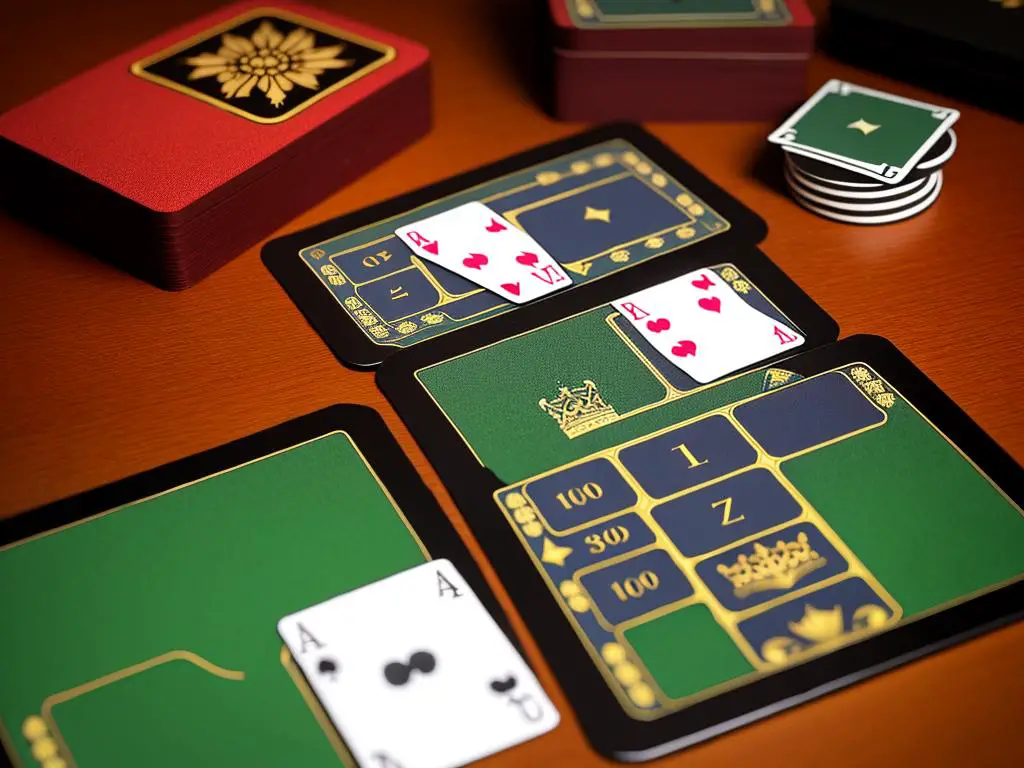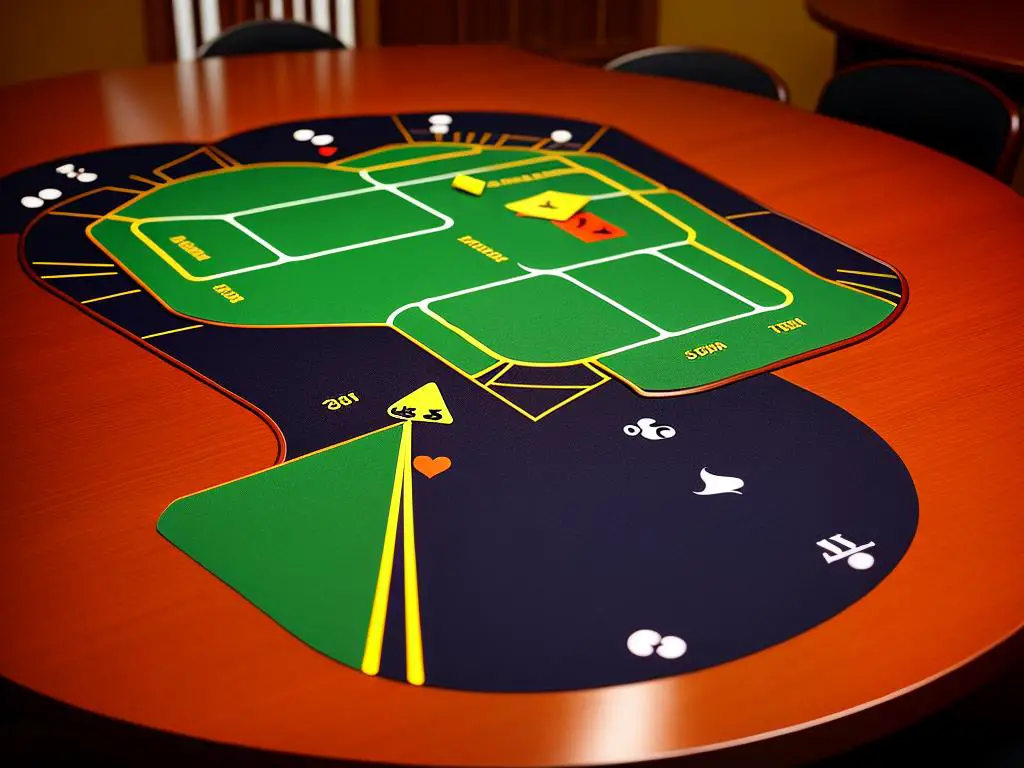If you’ve ever found yourself lost in a web of cards when playing Spider Solitaire, then you’re in the right place. Our aim is to guide you, whether you’re an enthusiast or a hobbyist, to become more proficient at this game. We will focus on understanding the basics and fundamentals rules of Spider Solitaire, exploring tactics that can enhance your chances at victory, and finally, encouraging consistent practice to master the subtle dynamics of this intriguing game. By tackling the goal from these three angles, we’re sure your proficiency will soon be unmatched.
Understanding the Basics of Spider Solitaire
Understanding the objective of Spider Solitaire
Spider Solitaire is a popular card game that can be played on a computer or with a physical deck of cards. The objective of the game is to arrange all cards into complete suits, from King to Ace, in descending order. Once a full suit is arranged correctly, it is automatically removed from the game, and the ultimate goal is to clear the entire tableau of cards.
Recognizing The Deck Setup
Spider Solitaire is unique because it uses two full decks of standard playing cards, which equals 104 cards. When starting a game, 54 of these cards are laid out in ten columns to form the tableau. The remaining 50 cards are set aside to be drawn from later. The setup might differ slightly depending on the difficulty level. In the “easy” version, all the cards in the deck and tableau are of the same suit, typically Spades. The “intermediate” level incorporates two suits, usually Spades and Hearts. The “advanced” or “difficult” level involves all four suits.
Understanding the Tableau and Card Layout
The tableau in Spider Solitaire consists of ten columns of cards. On game setup, each column has a certain number of face-down cards with one card face-up on top. The first four columns have five cards each with the top card face up, the remaining six columns have four cards each with the top card face up.
The face-up cards on the tableau can be moved on top of another face-up card that is one rank higher, creating a sequence. Sequences of cards in the tableau can also be moved together, though this can depend on the number of empty spots available in the game. The cards in the tableau should be arranged in descending rank, from King to Ace, although this doesn’t necessarily need to be in the same suit.
When there are no longer movements to make with the current face-up cards, the player must draw a new row of cards from the stock to add onto each column in the tableau. This changes the dynamic of the game, bringing in new possibilities for the player. Each time the stock is drawn, it adds a level of difficulty to the game.
Managing Spider Solitaire’s tableau, understanding the deck setup, and knowing the game’s objective are crucial to mastering the game. It may seem daunting initially, but with practice, this game can be highly rewarding and fun. So, shuffle up those two decks of cards and get playing!

Strategies and Techniques to Win Spider Solitaire
Introduction: Spider Solitaire, the game of patience with strategies to win
The classic game of Spider Solitaire is a popular and challenging solitaire game, mastered by some, but elusive to many. This game, either played traditionally with cards or virtually on a computer or mobile device, is a test of patience, strategy, and foresight. Regardless of the method, learning the right strategies and techniques can significantly improve your chances of securing a winning game. These strategies range from when best to deal new rows, effectively managing empty tableau piles, and color-wise management of sequences.
Knowing when to deal new rows in Spider Solitaire
One crucial strategy to employ when playing Spider Solitaire is knowing the ideal moment to deal with new rows. It is wise not to rush into dealing new rows despite the temptation. Before dealing, make sure you have made all possible moves with the existing cards on the tableau. Dealing new rows without exhausting available moves can sometimes lead to a dead-end and a possible quick loss.
Another important factor to consider before dealing new rows is the cards’ suit on the tableau. If consecutive cards belong to the same suit, it’s usually a green light to deal new rows. This is because having more of the same suit makes it easier to manage subsequent moves and organize the cards into sequences.
Handling empty tableau piles tactically
Empty tableau piles should be perceived as your best friend in a game of Spider Solitaire. Having vacant spaces in the tableau provides you with flexibility and more room to maneuver. However, they can be a double-edged sword if not properly managed.
Before you hastily shift cards to fill up an empty tableau pile, consider the future sequences you can unravel. Analyze the cards at your disposal and move those that can potentially uncover productive sequences.
Another consideration when handling empty piles is to try and maintain at least one or two empty piles at all times. They can be genuinely lifesaving, particularly when you get stuck and need space to maneuver and create series.
Managing sequences color-wise in Spider Solitaire
Managing sequences color-wise while playing Spider Solitaire can be a game-changing strategy. It revolves around the organized arrangement of sequences with the same suit or color.
Aim for sequences of the same suit whenever possible. This will give you the added advantage of moving the entire stack as one unit, allowing you to free up tableau spaces faster and more efficiently.
It is, however, important to remember that while organizing sequences according to the same suit is beneficial, don’t decline a chance to create an out-of-suit sequence if that’s the best move available. Sometimes, establishing mixed sequences can lead to discovering more productive sequences in subsequent moves.
Conclusion: Winning Spider Solitaire with strategy and patience
Mastering Spider Solitaire is a blend of patience, strategy, and a deep understanding of the game’s nuances. By putting these strategic considerations into practice – knowing when to deal new rows, managing empty tableau piles effectively and organizing your cards into sequences color-wise – you stand an excellent chance of walking away a Spider Solitaire winner.
Remember, the essence of Spider Solitaire, like many card games, isn’t merely about winning – it’s the challenge of the game itself. So be patient, stay focused, and play strategically, and with practice and experience, your winning rate will undoubtedly improve.

Practicing Spider Solitaire
Introduction: Learning the fundamentals of Spider Solitaire.
Spider Solitaire is a popular card game played with one or two standard decks depending on the difficulty level. This game offers an interesting mix of strategy and luck, and the challenge it presents has charmed aficionados worldwide. Here, you’ll find a step-by-step walkthrough to familiarize yourself with the game’s dynamics, strategies, and play-style.
Understanding the Basics of Spider Solitaire.
Before proceeding to play, you must familiarize yourself with the game’s basic rules. Spider Solitaire is played with two decks (104 cards). Your goal is to build a column with descending cards from King to Ace of the same suit. When one set is completed, it will automatically be moved aside. You win when you successfully create eight such sets.
Arrangement of Spider Solitaire.
In the beginning, ten piles of cards are laid out on the game board – each containing between one to six cards. Only the top card in each pile is shown face-up, while the rest are shown face-down. The remaining cards form a stockpile used to advance the game.
Starting the Game
Choose a game level that suits your comfort and experience level. If you’re starting, the one-suit game might be the most appropriate as it’s simpler and easier. Begin by assessing the tableau and determining how best to organize the cards. Search for any obvious moves first, those involving the same suit in descending order.
A Strategy for Success
Formulating a good strategy is crucial for winning at Spider Solitaire. Always strive to expose hidden cards, empty piles when possible, and do not deal new cards until all possible moves on the tableau are done.
Try to build on higher-ranked cards first because low-ranked cards, like Twos and Threes, can end up trapping other cards. Aim to build your sequences in suit, as it would make it easier to shift series of cards within the tableau for better organization.
Learning from Mistakes
Spider Solitaire, like any other game, requires patience. Pay attention to the mistakes you make during the game and try to learn from them. Be ready to undo your moves if you realize a better move was available.
Build Experience by Repeated Practice
In order to ace this game, you need to practice consistently. Allocate a certain amount of time daily to playing Spider Solitaire. This will not only make you familiar with the dynamics of the game, but it will also help you recognize patterns and understand what works and what doesn’t, ultimately improving your strategy and decision-making skills.
Remember, enjoying the game is as essential as winning, so don’t stress too much about losing a round or two. The more you play, the better you get, and the more gratifying the game becomes!

After taking in and implementing the strategies we’ve navigated through, you’re bound to see a remarkable improvement in your Spider Solitaire skills. Remember that the fundamental factor in refining your game is continuous practice. Take the time to understand possible sequences, foresee potential pitfalls and become familiar with managing your tableau. The more you play, the more instinctive these strategies will become. Soon, you would find yourself not just surviving the game, but truly enjoyed and thriving within the fascinating web that is Spider Solitaire.
Frequently Asked Questions about Mastering Spider Solitaire
A: Spider Solitaire is a popular single-player card game that requires arranging cards in descending order to create sequences and remove them from the tableau.
A: In Spider Solitaire, players aim to build complete sequences of cards from King to Ace in the same suit. The game consists of 10 columns of cards, and the objective is to clear the tableau by moving sequences.
A: Spider Solitaire is typically played with two decks of standard playing cards, totalling 104 cards.
A: Yes, Spider Solitaire offers different difficulty levels, allowing players to choose the number of suits and tailor the game’s challenge to their preference.
A: Yes, Spider Solitaire is a game that can be enjoyed by players of all ages, providing a relaxing and mentally stimulating solo play experience.
A: Absolutely! Spider Solitaire is available as a digital game, making it accessible on various devices such as smartphones and tablets.
A: The duration of a game of Spider Solitaire can vary depending on factors like the player’s skill level and the chosen difficulty. On average, a game can take around 10 to 30 minutes.
A: Yes, developing strategies like focusing on freeing downcards, creating spaces, and planning moves ahead can enhance your chances of completing the game successfully.
Q: Can I undo moves or restart a game in Spider Solitaire?
A: Yes, most digital versions of Spider Solitaire offer options to undo moves and restart games, allowing players to refine their gameplay and try different approaches.
